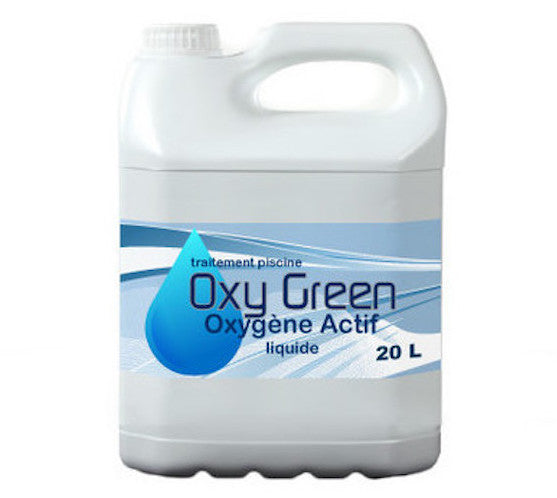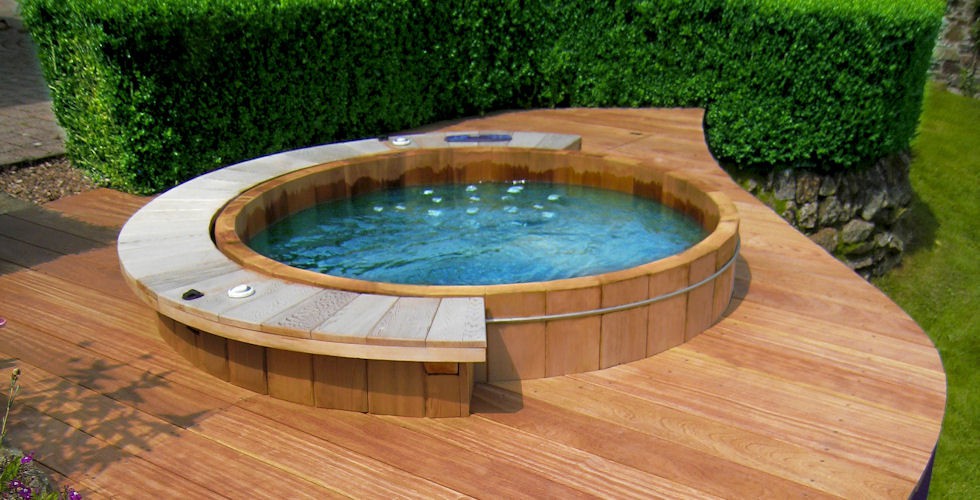Salt treatment systems have become very popular in recent years, particularly after being touted as more environmentally friendly than chlorine treatments. It's important to understand how salt treatment systems work to understand their real benefits.
The salt chlorine generator
Salt is a chemical compound composed of sodium and chlorine. Thus, salt can generate chlorine. The concept is simple: at the beginning of the season, salt is first added to the pool water to a concentration of 2,800 parts per million. This saturates the pool water. The water is then pumped out. Using an electric current, the chlorine is extracted from the salt before being returned to the pool in the form of chloramine. Chloramines are volatile substances that partially escape from the water as gas.
Salt should only be added when there is a water loss. The advantage over chlorine is that there is less chemical handling throughout the season, but it is important to understand that the process of a salt sanitation system is to convert salt into chlorine.
The sanitation effect of this system is affected by changes in temperature, the number of bathers, sunlight, and rain. When any of these factors change, shock treatment is often required to prevent algae growth.
Harmful effects on our health
So, contrary to what we would have them believe, swimmers are not swimming in salty sea water, but in a pool containing chlorine, with once again, all the harmful effects and disadvantages of chlorine on health. Inhaling chloramine fumes can cause burning sensations or irritation of the eyes, throat, temporary coughing, dyspnea, nausea and vomiting, sometimes loss of consciousness. Chloramines are classified as a potentially carcinogenic substance, and are responsible for asthma in high-level swimmers as well as young children. In the end, it is not only chlorine that is absorbed through the skin but also sodium and salt.
On the other hand, the ClearBlue ionizer doesn't cause any of these problems, and it also offers benefits for skin and hair, as well as a regenerative effect. It is not affected by external changes in any way, and the ClearBlue system user doesn't have to do anything differently if there are 20 children in their pool.
And the environment?
An average 40,000-liter swimming pool requires 240 kg of salt the first year, then 100 kg each year thereafter. Each year, 100 kg of salt is sent down the drain, in the form of salt water that cannot be reprocessed by treatment plants and tends to contaminate our waterways and groundwater. This method is therefore far from being environmentally friendly.
Backwashes from salt-treated pools are harmful to surrounding soils, lawns, landscaping and gardens and can kill wildlife, render soils infertile and prevent plant growth.
It is for these two main reasons that these salt water treatment systems are already banned in some municipalities in the United States and Australia. Closer to home, the city of Toronto has banned the discharge of salt-treated swimming pool water into sewer systems since 2008.
Expensive, the salt system…
The price of an electrolyzer can range from $1,000 to $2,500 to purchase the device. To this initial investment, you must add $30 to $100 in salt the first year (depending on the water volume), as well as $15 to $50 in salt each year thereafter. The salt cell must be replaced every 3 to 5 years, at a cost of $400-700.
Additionally, salt systems require an average of 500 watts of AC power for a 20,000-gallon pool. An ionizer uses only about 40 watts of DC power to treat the same amount of water, reducing pump usage to only 8 or 10 hours per day.
Not to mention the additional costs….
Salt chlorine generators are corrosive and can also prematurely damage metal fixtures and parts, which will need to be replaced. It's also not suitable for steel pools, which are prone to rusting over time. Vinyl liners and covers, as well as solar covers, can be damaged by chlorine or salt. It can even damage patio furniture, not to mention swimsuits, which will suffer the same fate as in pools treated with traditional chlorine.
Since copper/silver ionization does not require the use of chemical oxidants, all these expensive devices are able to maintain a normal lifespan.
Interview
Although chlorine isn't manually added to pool water, saltwater pools still use chemicals to disinfect the water. Therefore, owners should continue to test the chlorine levels in the water regularly to ensure the salt cell is generating the necessary amount of chlorine. The pH level should also be tested, as if it gets too high or too low, it can damage the salt cell.
All salt chlorine generator cells should be cleaned every 90 days to prevent calcium buildup on the cell which could clump together and need to be replaced.
Finally, salt filtration systems typically need to operate for more hours per day than traditional systems to generate enough chlorine to disinfect the pool water. This obviously means higher electricity consumption and a higher bill.
Here are some customer photos demonstrating the ravages of salt on pool equipment:











3 comments
LéaSyvrais
Bonjours ,je voudrais s``avoir si je peut mettre mon eau de piscine au chlore parce que elle est au sel mais la cédule ne fonctionne plus car sa fait 10 sacs de sel que je met et aujourd’hui ma piscine devient verte et mon eau est brouiller je voudrais s avoir si je peut la mettre au chlore la maintenant malgré qu`il a beaucoup de sel svp me répondre une dame qui est bien triste parce que je ne sais pas quoi faire merci
réjean martineau
est ce que le sel est plus dure sur une piscine en ciment
Jacques Bellemare
À la lecture de votre évaluation du systėme au sel, j’en conclue que ce serait un erreur de ma part d’aller vers un achat d’un chlorateur au sel la cause de problèmes récurants de corrosion?
Ai-je bien interpréter le sens de votre article?
Je fais installer une piscine hors-terre au printemps prochain chez moi
Merci de me répondre
Leave a comment
This site is protected by hCaptcha and the hCaptcha Privacy Policy and Terms of Service apply.